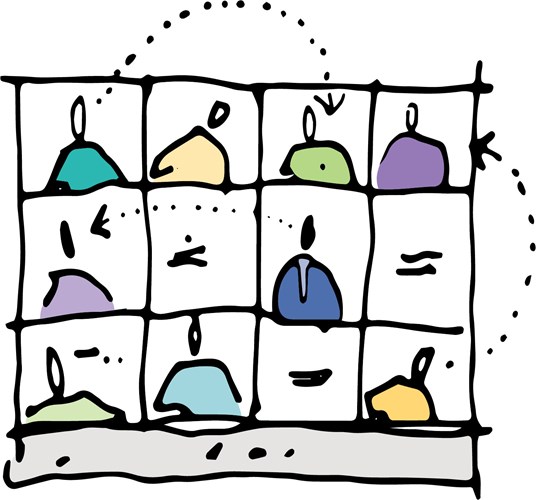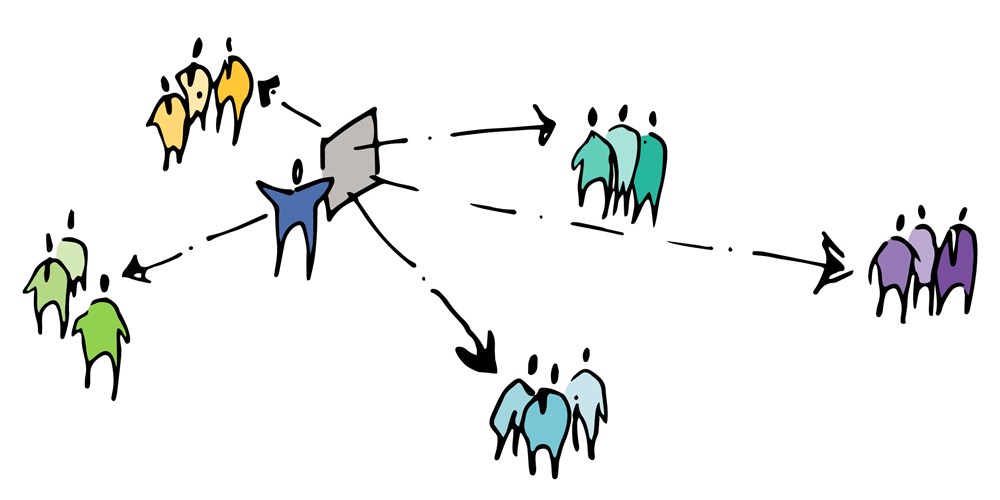
Written by: Katherine Masleid-Rivard
More than buzz words, these are real concerns for any public project and ignoring them can create costly road blocks and detours. I’ve seen neglected stakeholders bring a project to a grinding halt; community members wondering if their leadership is even listening; and countless resources wasted on ineffective meetings. Effective engagement is critical to project success and this series walks through how to do that.
While success at these goals may seem elusive, there are key steps and questions you can use to create a clear path forward. I’ll walk through specific areas and the questions I ask to help achieve these goals in these five posts:
I was in the middle of creating this series when the pandemic shut down our county. Suddenly everything was different. – Worry and concern entered my mind.
How would we meet? Would anyone participate? What are we going to do? Could we even do effective outreach?
Now, some of our projects had to take a breather as other priorities took precedent, but the new priorities also needed critical stakeholder discussions. While the context and goals may have changed, the basics I discussed in Part Two still apply.
Here are virtual outreach formats that have worked well for ABA in the pandemic with exciting results!
Surveys

Surveys are a classic tool and format for outreach. In fact, they can be even more successful when personal interaction is impossible.
For example, we’ve strategically used a breadth of engagement formats during master planning for the City of Ontario’s library system. Early in the year, surveys received only basic participation with less than 100 responses. In-person events were significantly better attended. However, when stay-in-place came into full effect, the next survey received over 1,200 responses! It is good to leverage what you know about your community and past experience, but do not be afraid to challenge those assumptions when things change.
Conference Calls
 Meeting in-person has not been an option in months, but video conferencing can be a great alternative. With the travel time saved, we have been able to have more time with our clients in deeper discussions or more frequent check-ins. But be wary of the pitfalls of this popular format. First, please do not waste people’s time: have a clear agenda and make sure the right people are in the virtual room. Next, keep the schedule sane. In other words, respect people’s need to move, take bio breaks, and not be in an endless string of meetings. Also, make your meeting as engaging as possible. An engaging host will vary the activities in the agenda (presentation versus discussion), be prepared and to the point, and keep things on track and on time. These things are important for in-person meetings and even more so for virtual meeting when it is so easy for participants to “multi-task” or just checkout.
Meeting in-person has not been an option in months, but video conferencing can be a great alternative. With the travel time saved, we have been able to have more time with our clients in deeper discussions or more frequent check-ins. But be wary of the pitfalls of this popular format. First, please do not waste people’s time: have a clear agenda and make sure the right people are in the virtual room. Next, keep the schedule sane. In other words, respect people’s need to move, take bio breaks, and not be in an endless string of meetings. Also, make your meeting as engaging as possible. An engaging host will vary the activities in the agenda (presentation versus discussion), be prepared and to the point, and keep things on track and on time. These things are important for in-person meetings and even more so for virtual meeting when it is so easy for participants to “multi-task” or just checkout.
Digital Collaboration
So you have your ‘go-to’ virtual meeting tool and can ‘zoom’ with the best, but are you moving beyond discussion to collaboration? ABA has been conducting exciting collaborative events with the community including multiple think tank sessions and open house events. In these fun events, we’ve taken the virtual meeting to the next level with advanced settings and integrating live collaboration tools. Advanced virtual meeting settings let us break up a workshop into smaller groups to focus on specific topics and have a deeper dialogue. While a presentation is about telling a story, collaboration requires listening. These smaller, more focused groups engage stakeholders on a deeper level, within the context of a larger event. A heads-up though - you may need more helping hands to pull this off. Each group still needs a facilitator and another hand for the technology really helps to keep things running smoothly.
 In a virtual meeting being able to see the people you are talking to is great but being able to see what you are working on is even better. Many virtual meeting platforms offer screen sharing, but there are also collaboration platforms that allow you to edit content side-by-side. I’ve been using tools like Google documents and SharePoint that allow simultaneous editing by multiple users for a while. Now, I’m regularly including more visual tools like Miro. With Miro, I can sketch over a design image to explain a concept to the group or live capture stakeholder comments on digital sticky notes. For technology enabled groups, we can work side-by-side, adding comments and inspiration images. These tools take on the roles of the flipcharts and posters you commonly see at in-person meetings. They also have a similar impact by allowing stakeholders to see the information and see their comments being captured. The tools give a more complete understanding and enable participants to feel heard. It has been encouraging to hear participants describe these enhanced meetings as welcoming, personal, and exciting. What was the last virtual meeting you would describe that way? Exactly.
In a virtual meeting being able to see the people you are talking to is great but being able to see what you are working on is even better. Many virtual meeting platforms offer screen sharing, but there are also collaboration platforms that allow you to edit content side-by-side. I’ve been using tools like Google documents and SharePoint that allow simultaneous editing by multiple users for a while. Now, I’m regularly including more visual tools like Miro. With Miro, I can sketch over a design image to explain a concept to the group or live capture stakeholder comments on digital sticky notes. For technology enabled groups, we can work side-by-side, adding comments and inspiration images. These tools take on the roles of the flipcharts and posters you commonly see at in-person meetings. They also have a similar impact by allowing stakeholders to see the information and see their comments being captured. The tools give a more complete understanding and enable participants to feel heard. It has been encouraging to hear participants describe these enhanced meetings as welcoming, personal, and exciting. What was the last virtual meeting you would describe that way? Exactly.
Technology and Accessibility

Technology offers many opportunities and possibilities for engagement, but it come with challenges too. Not everyone has the same comfort level with technology or the same access. As you plan engagement events, think about your stakeholders’ access to technology: What will be the most accessible format? Smart phones are sometimes the only internet connection a household may have. If your project is working to serve a disenfranchised community this is even more critical. Are there low-tech alternatives? Offer a phone number for people to call in to the meeting. Can you offer technology support? In the past, community events have offered childcare, you could offer Wi-Fi or a hotspot connection.
Key Takeaways:
Dramatic changes of outside circumstances can require adaptation and a different approach. Revisit your assumptions and explore alternate engagement formats to meet your goals.
Each crisis is different and requires thought about how the context has changed and which formats will best achieve your engagement goals. Feel free to be creative, try something new, or revisit a classic, but most importantly keep the discussion going!
As I’ve mentioned, your goals for the interaction can change throughout the process. In my next post, I dive into that aspect and how you can setup an effective evolution of your engagement process.